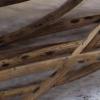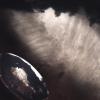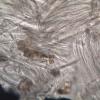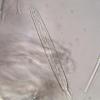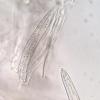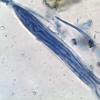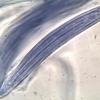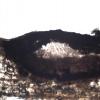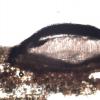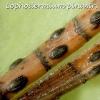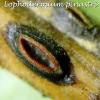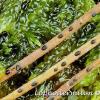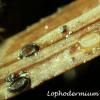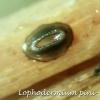
13-01-2026 09:10
 Danny Newman
Danny Newman
Dasyscyphella chrysotexta on indet. decorticate ha

13-01-2026 08:49
 Danny Newman
Danny Newman
Coccomyces sp. on fallen Rhododendron leavesPretty

13-01-2026 08:43
 Danny Newman
Danny Newman
Tricladium varicosporioides on indet. decorticate

12-01-2026 22:02
Ethan CrensonHello all, I am hoping someone will have some ins

13-01-2026 07:57
 Danny Newman
Danny Newman
cf. Bombardia on indet. decorticate woodAppalachia

13-01-2026 07:51
 Danny Newman
Danny Newman
Atrocalyx sp. on indet. herbaceous stemAppalachian

13-01-2026 07:28
 Danny Newman
Danny Newman
Chlorociboria glauca on indet. decorticate logThe

13-01-2026 07:14
 Danny Newman
Danny Newman
Neodasyscypha cerina on indet decorticate logThe S

11-01-2026 20:35
Hello.A very tiny pyrenomycete sprouting sparsely

12-01-2026 05:24
 Danny Newman
Danny Newman
Cyathicula coronata on Urtica dioicaCataloochee Di
Lophodermium on pine needles
Lepista Zacarias,
21-03-2017 18:46
This fungus was found on pine needles about two weeks ago. I don't know the exact species of pine, but the needles are double and do not excceed 10 cm, some with half of that size.
Ascomata black with less than 1mm long, slightly raised and aligned lengthwise on the needle having a slit with greyish labia;
Asci 100-115 x 11-13 µm;
Ascospores hyaline, acicular almost as long as the asci.
Is it possible to identify the species?
Thanks in advance for you help,
zaca
Joanne Taylor,
21-03-2017 19:21
Re : Lophodermium on pine needles
Hi there,
it looks like your needles are trash needles (those which have died prematurely as the branch has been broken) and not senesced litter needles (died of old age). If they are the former and if your host is Scots Pine, then it might either be L. conigenum or L. seditiosum. You then need to look at your sections and look for displaced epidermal cells (the ascomata are more or less sub epidermal but a few cells get left at the base of the ascomata depending on the species). If thereare none then it is L.seditiosum and if there are a few (less than 7)scattered about then it will be L. conigenum. This information is from David Minter's amazing studies on Lophodermium!
Cheers,
Jo
it looks like your needles are trash needles (those which have died prematurely as the branch has been broken) and not senesced litter needles (died of old age). If they are the former and if your host is Scots Pine, then it might either be L. conigenum or L. seditiosum. You then need to look at your sections and look for displaced epidermal cells (the ascomata are more or less sub epidermal but a few cells get left at the base of the ascomata depending on the species). If thereare none then it is L.seditiosum and if there are a few (less than 7)scattered about then it will be L. conigenum. This information is from David Minter's amazing studies on Lophodermium!
Cheers,
Jo
Lepista Zacarias,
21-03-2017 20:07
Joey JTan,
21-03-2017 20:48
Re : Lophodermium on pine needles
I can't make them out in your picture, it usually requires a pretty thin vertical section. Sectioning air-dried specimens with a safety razor blade is often easier than sectioning fresh specimens.
Minter describes and illustrates the concept of displaced epidermal cells in:
Minter, D. W., Staley, J. M., & Millar, C. S. (1978). Four species of Lophodermium on Pinus sylvestris. Transactions of the British Mycological Society, 71(2), 295-301.
Minter, D.W., 1981. Lophodermium on pines. Commonwealth Mycological Institute.
It relates to how the ascoma is embedded in the host tissue. It took me a bit of time to learn how to readily identify this character; collecting and comparing different subcuticular and subepidermal Lophodermium species helped.
Of course there are cryptic species complexes in Lophodermium, which makes identification somewhat tenuous for some species...
Minter describes and illustrates the concept of displaced epidermal cells in:
Minter, D. W., Staley, J. M., & Millar, C. S. (1978). Four species of Lophodermium on Pinus sylvestris. Transactions of the British Mycological Society, 71(2), 295-301.
Minter, D.W., 1981. Lophodermium on pines. Commonwealth Mycological Institute.
It relates to how the ascoma is embedded in the host tissue. It took me a bit of time to learn how to readily identify this character; collecting and comparing different subcuticular and subepidermal Lophodermium species helped.
Of course there are cryptic species complexes in Lophodermium, which makes identification somewhat tenuous for some species...
Lepista Zacarias,
21-03-2017 21:31
Re : Lophodermium on pine needles
Thanks, Joey,
for your comments and references.
I will try to get some literature on the genus and, maybe make a better section.
Best regards,
zaca
for your comments and references.
I will try to get some literature on the genus and, maybe make a better section.
Best regards,
zaca
Lepista Zacarias,
22-03-2017 00:36
